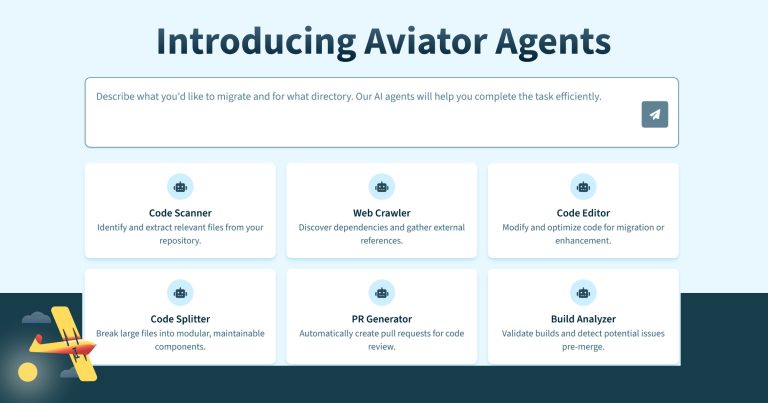Aviator Agents: LLM-Assisted Large Scale Code Migrations

Aviator Agents is a purpose-built code migration system built for scale and correctness.
Read articles about Aviator in our blog to learn more about how our developer productivity suite helps engineering teams push more reliable code, faster.

Aviator Agents is a purpose-built code migration system built for scale and correctness.

Today we’re happy to announce that affected targets now supports Nx.

Powered by WordPress